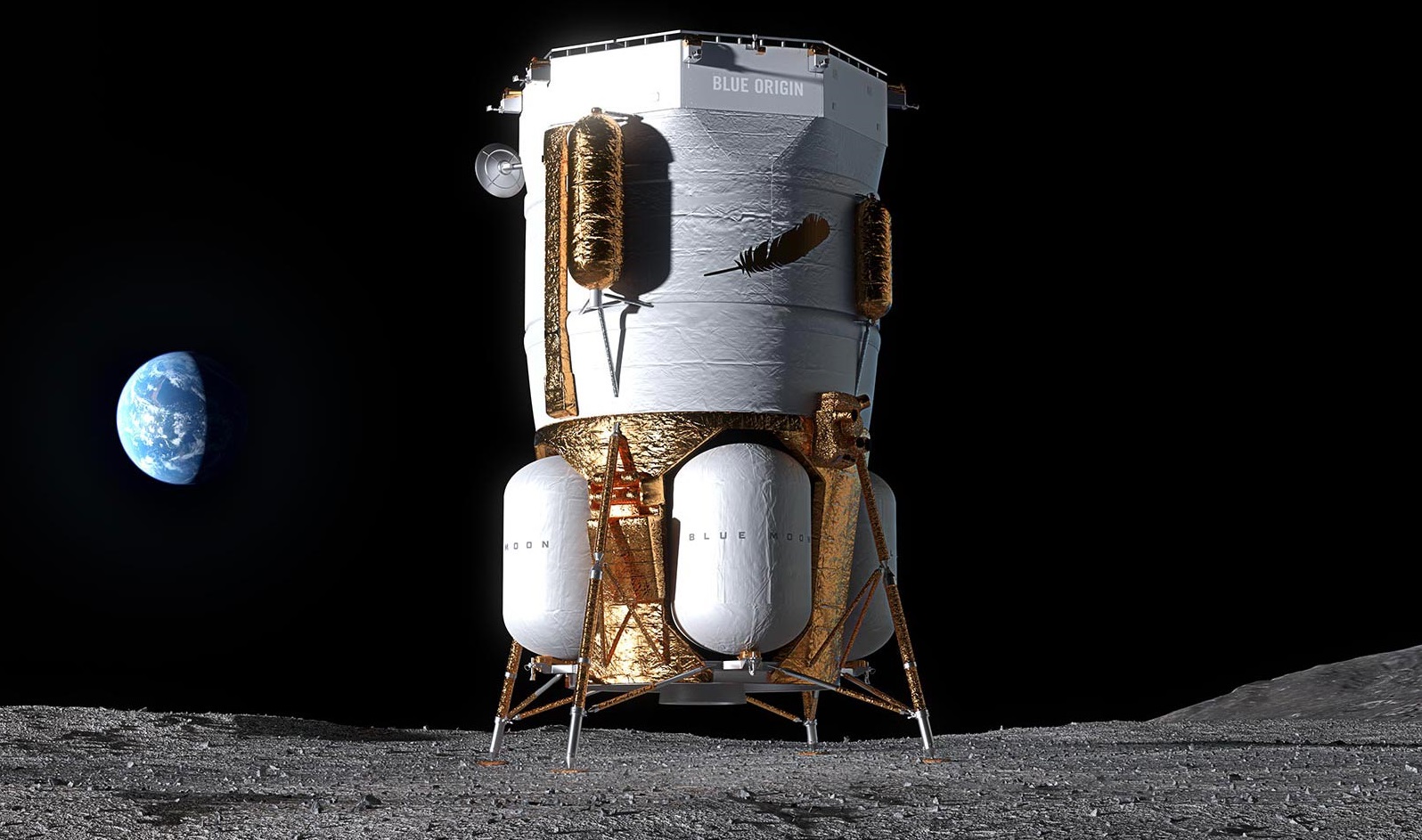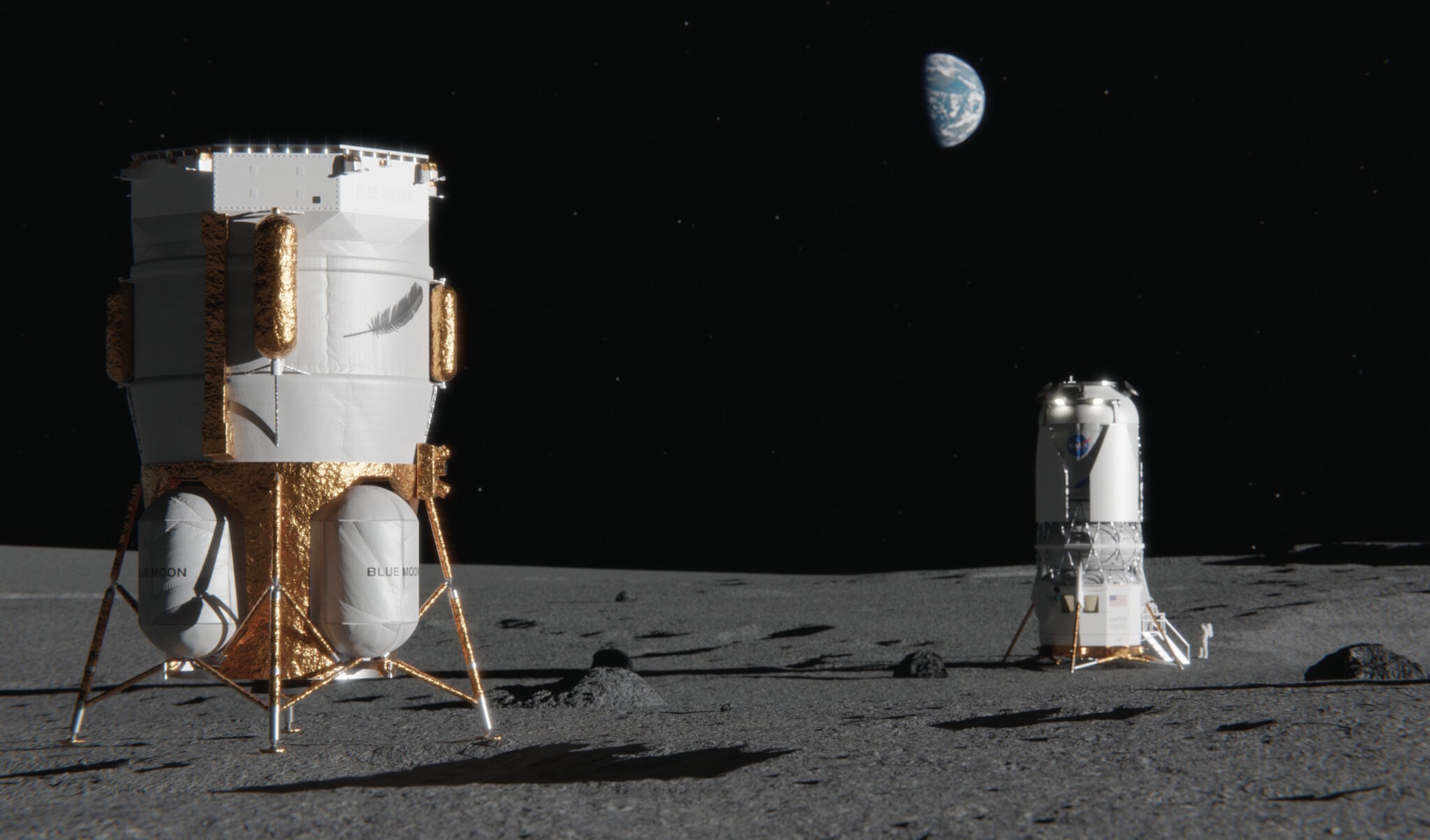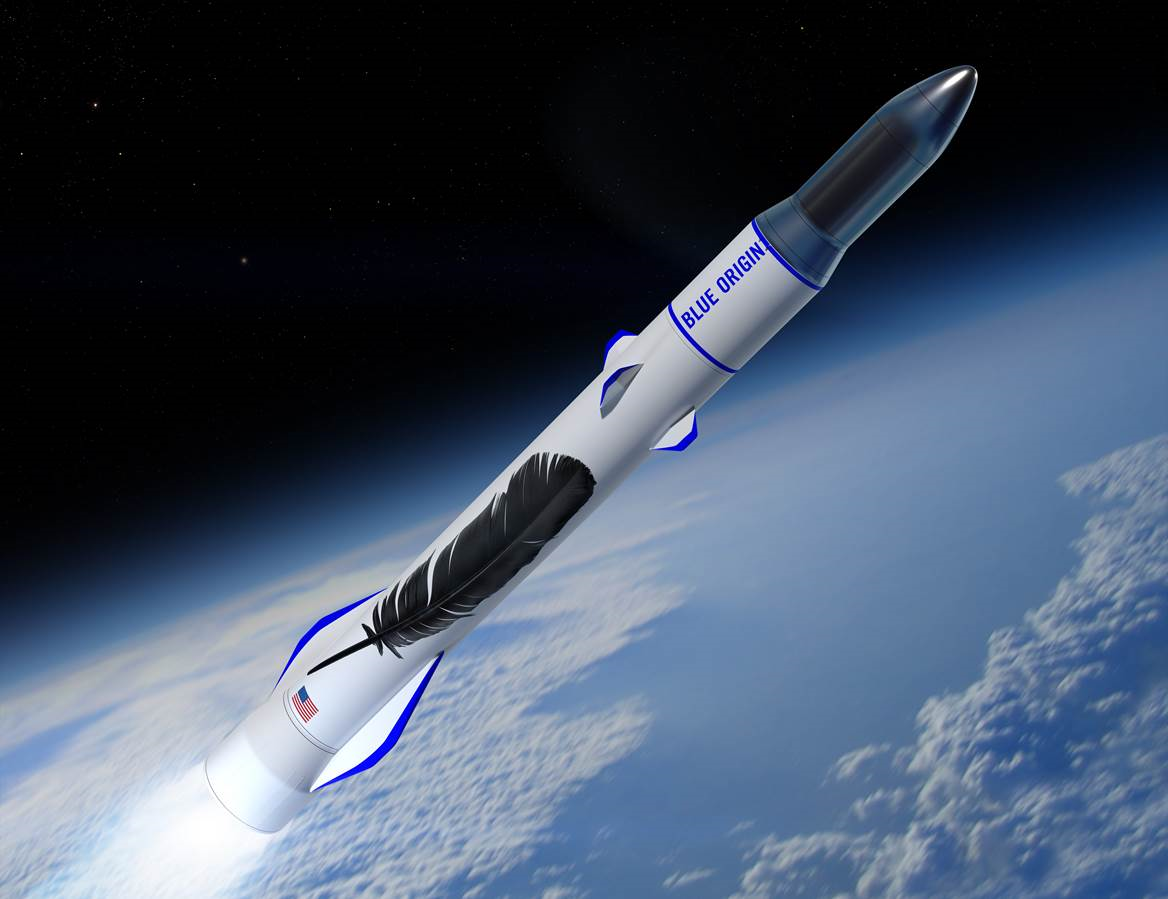The space company Blue Origin, founded by Jeff Bezos, has set ambitious deadlines for landing on the moon. However, without a crew. The demo version of their Blue Moon Mark 1 (MK1) spacecraft should do this within 12-16 months. The development of Blue Origin is attracting interest from NASA, and at the same time creates competition with SpaceX and Elon Musk in the race to return to the Moon.

Make it to 2029
Blue Origin’s senior vice president, John Couluris, expressed these ambitious plans in an interview with 60 Minutes on CBC channel. The MK1-SN001 mission aims to demonstrate the capabilities of the lander, focusing on important tests of the BE-7 engine, power and propulsion systems, avionics and precision landing detection systems with an accuracy of 100 meters.
Blue Origin and SpaceX are now racing to land humans back on the moon – with China on their heels, saying they plan to send astronauts to the moon by the end of the decade. https://t.co/noSBC6SLWx pic.twitter.com/JaKfgz2UN2
— 60 Minutes (@60Minutes) March 4, 2024
These plans are impressive, because the official launch of the project took place very recently — in May 2023. That’s when NASA signed a USD 3.4 billion contract with Blue Origin to develop a lunar lander for the Artemis missions. This contract provides for the creation of a Blue Moon Mark 1 with a height of 16 meters, which will be used as a cargo lunar vehicle for the Artemis V mission in 2029, and which will later be modified to carry astronauts.

A distinctive feature of Blue Moon is its multiple design, which distinguishes it from the MK1 demonstration single-use spacecraft. It will transport astronauts and return them to lunar orbit. Couluris noted that one Blue Moon would remain in orbit, and was used as a fuel station for spacecraft that would return from the Moon to Earth.
The company’s ambitious timetable is also impressive, because Blue Origin has still not launched its 98-meter New Glenn launch vehicle, which will be used for both the MK1 and Blue Moon. However, the company plans to make the first launch later this year.
Ambitious but slow Blue Origin
Blue Origin actively expands its horizons by setting new deadlines and adopting a more assertive approach with major players such as Lockheed Martin, Boeing, Draper, Astrobotic and Honeybee Robotics. Last year, the company acquired the services of a former Amazon executive, David Limp, to accelerate its development. After the resignation of the previous CEO Bob Smith, the company decided to take a more active role in space flight, overcoming the reputation of being too cautious and slow.

SpaceX and NASA plan to use Starship to land humans on the Artemis III and Artemis IV missions in 2026 and 2028, respectively. However, there are doubts that SpaceX will complete the construction of its lander on time, since Starship is still under development. It is important to note that SpaceX should conduct a demonstration mission to the Moon before the launch of Artemis III, but whether Elon Musk’s company will be able to meet the schedule is still unknown.
While SpaceX is trying to meet tight deadlines, Blue Origin is ready to enter the game with its own next-generation spacecraft, which is rumored to compete with SpaceX’s Crew Dragon and Sierra Space’s Dream Chaser. The space race between SpaceX and Blue Origin is escalating, making the private space sector even more exciting. This competition is being watched not only by the space industry, but also by the whole world.
Earlier, we reported on how the founders of Blue Origin created a secret helium-3 mining startup on the Moon.
According to gizmodo.com
Follow us on Twitter to get the most interesting space news in time
https://twitter.comne/ust_magazine


